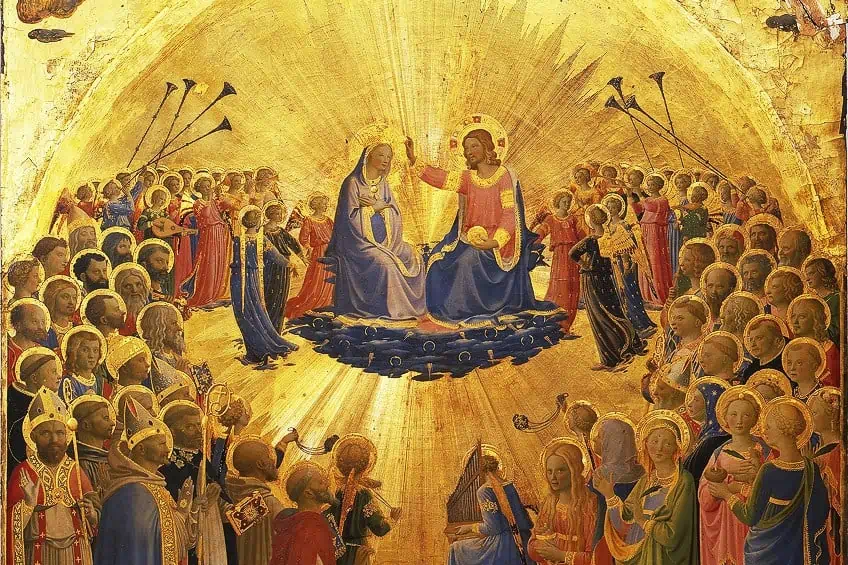Early Renaissance – Discover the Early Renaissance Time Period
The Renaissance saw the birth of many incredible ideas and forms of knowledge expansion across disciplines such as science, art, religion, culture, and other defining aspects of human civilization following the Middle Ages. This article will introduce you to the art of the early Renaissance, including the characteristics of early Renaissance art and its significance in the broader context.
Contents
- 1 An Introduction to the Early Renaissance
- 2 Famous Early Italian Renaissance Artists and Artworks
- 3 Influential Figures of Early Renaissance Art
- 4 Characteristics of Renaissance Art: A Summary
- 5 Frequently Asked Questions
An Introduction to the Early Renaissance
The onset of the early Renaissance began in early 15th century Italy, which was the site of remarkable cultural rebirth. This cultural rebirth was to have a massive effect on the rest of the world as people knew it and spanned transformation and development across multiple crucial facets of education and human development, including architecture, science, art, and religion.
As you can imagine, this mass cultural rebirth would have come with its issues, deviants, and multiple upheavals since not everyone can adapt to vast change.
It is not to say that the beginning of the Renaissance was marked by sudden overnight change, rather, it was the first sign of enlightenment toward Modernism. The early Renaissance also demonstrated a shift in perspective from Gothic and Romanesque influences in traditional iconography to new stylistic preferences across subject matter, style, and education. New inventions across theology, philosophy, mathematics, and design inspired artists of the early 15th century to shift their perspective and explore more Contemporary approaches.

This involved the re-examination of classical art through the lens of the newfound humanities. The early Renaissance is also referred to as the Quattrocento, which translates to the number 1400. This period was the precursor to other segments of the Renaissance, including the High Renaissance, Mannerism, the North European Renaissance, and the Baroque periods. In this exploration of the early Renaissance, we will examine the proto-Renaissance artworks of 14th-century artists to gain a full scope of the art of the early Renaissance.
Artists such as Giotto and Cimabue were artists who championed the inclusion of Classical subject matter in their artworks. This laid the foundations for the art of the early Renaissance as discussed below.
Famous Early Italian Renaissance Artists and Artworks
Since Italy was the hub of the early Renaissance and cultural rebirth, it is only fitting that we examine the works and lives of some of the best Italian artists of the 14th and 15th centuries. Art from the early Renaissance was informed by a concept called Humanism that was fueled by the rediscovery of Greek antiquities, classical texts, and the broader humanities.
Humanism was centered on “an education befitting a cultural man” and promoted the individual as a measure of the universe itself.
During this time, one of the most powerful families who ruled the Italian city-state was known as the Medicis and were also key role players in promoting the arts in conjunction with new Humanist values of society. Below, we will explore a few famous early Italian Renaissance artists and artworks that encompass the genre.
Cimabue (c. 1240 – 1302)
| Artist Name | Cenni di Pepo (Cimabue) |
| Date of Birth | c. 1240 |
| Date of Death | 1302 |
| Associated Movements | Italian Proto-Renaissance |
| Medium | Painting, mosaic design |
Cimabue is said to be the pioneer of Proto-Renaissance art itself since he was the first Florentine artist to break away from the traditional Byzantine painting style associated with the Middle Ages. This meant that Cimabue began exploring depth and shading in the depiction of the human form as opposed to the flat and stylistic elements of the Byzantine.
Vasari also stated that Cimabue was Giotto’s teacher.
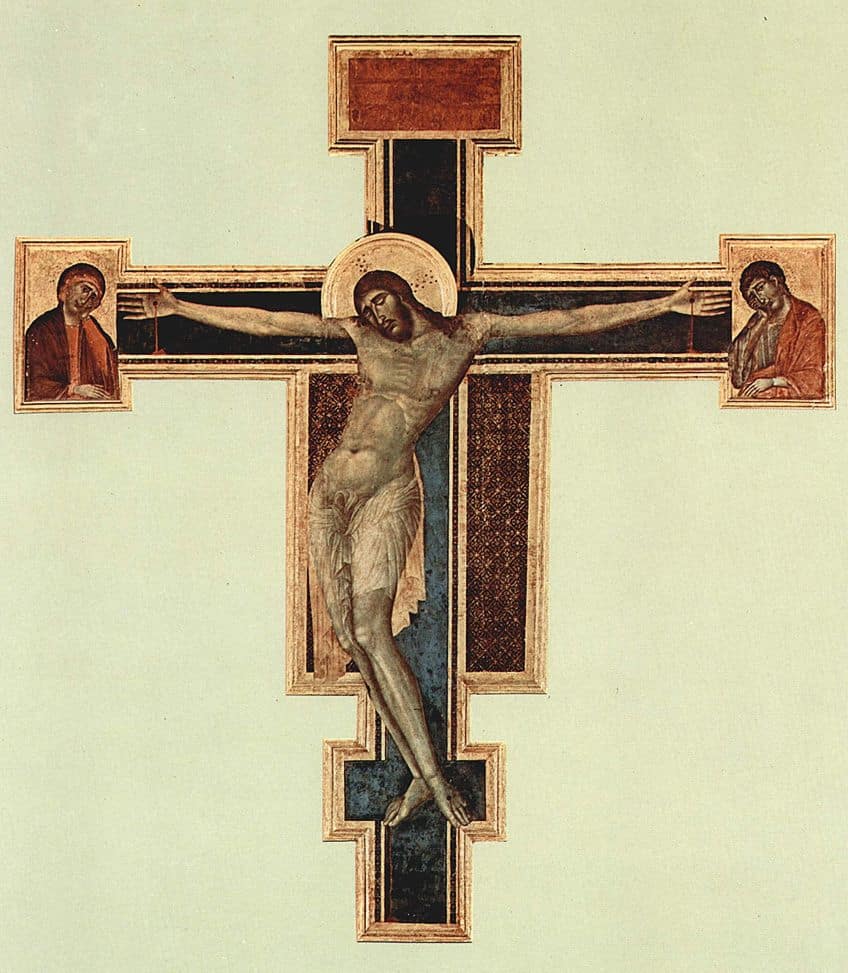
He recalls an account of Cimabue meeting the 10-year-old Giotto who drew an image of a sheep on a smooth rock and received an invitation from Cimabue to reside with him. Later on, it was Giotto’s talents that led him to overshadow the fame of Cimabue, and perhaps Cimabue could take credit for guiding young Giotto.
Santa Trinita Maestà (c. 1290 – 1300)
| Date | c. 1290 – 1300 |
| Medium | Tempera on panel |
| Dimensions (m) | 385 x 223 |
| Where It Is Housed | Uffizi Gallery, Florence, Italy |
This iconic Proto-Renaissance painting by Cimabue is one of his most famous works created for the Santa Trinita church in Florence. The painting depicts the Madonna (Mary) on a throne with Jesus. Both figures are encircled by eight angels with the half-portraits of four prophets below them. This scene was a classical Byzantine-era iconography often compared to the Greek archetype, Hodegetria, which refers to “pointing the way”.
The Madonna was meant to symbolize the church while Jesus represented truth, life, and “the proper way”.

Santa Trinita Maestà portrays Cimabue’s unique style that includes free and more humanistic forms as opposed to the rigidity of traditional Byzantine paintings. Vasari credited Cimabue as the first artist to pioneer a different approach to painting, which was the trigger for artists to follow.
Cimabue freed himself from the confines of the Byzantine era by depicting the Madonna in a frontal position with a serene facial expression and the application of a blended sfumato-chiaroscuro technique.
Giotto (1267 – 1337)
| Artist Name | Giotto di Bondone |
| Date of Birth | c. 1267 |
| Date of Death | 08 January 1337 |
| Associated Movements | Early Renaissance, Late Gothic, Proto-Renaissance |
| Medium | Painting, fresco, architecture |
Commonly referred to as simply Giotto, this Italian artist, and architect, was one of the most famous Proto-Renaissance artists of the late 13th and early 14th centuries. Giotto portrayed all his subjects as they appeared in nature and was one of the most prolific and celebrated artists of his time. Giotto is most famous for his frescoes at the Scrovegni Chapel (Arena Chapel), which was completed around 1305.
Among his other notable achievements and contributions, Giotto was also selected by the Commune of Florence to design the new bell tower for Florence cathedral in 1334.
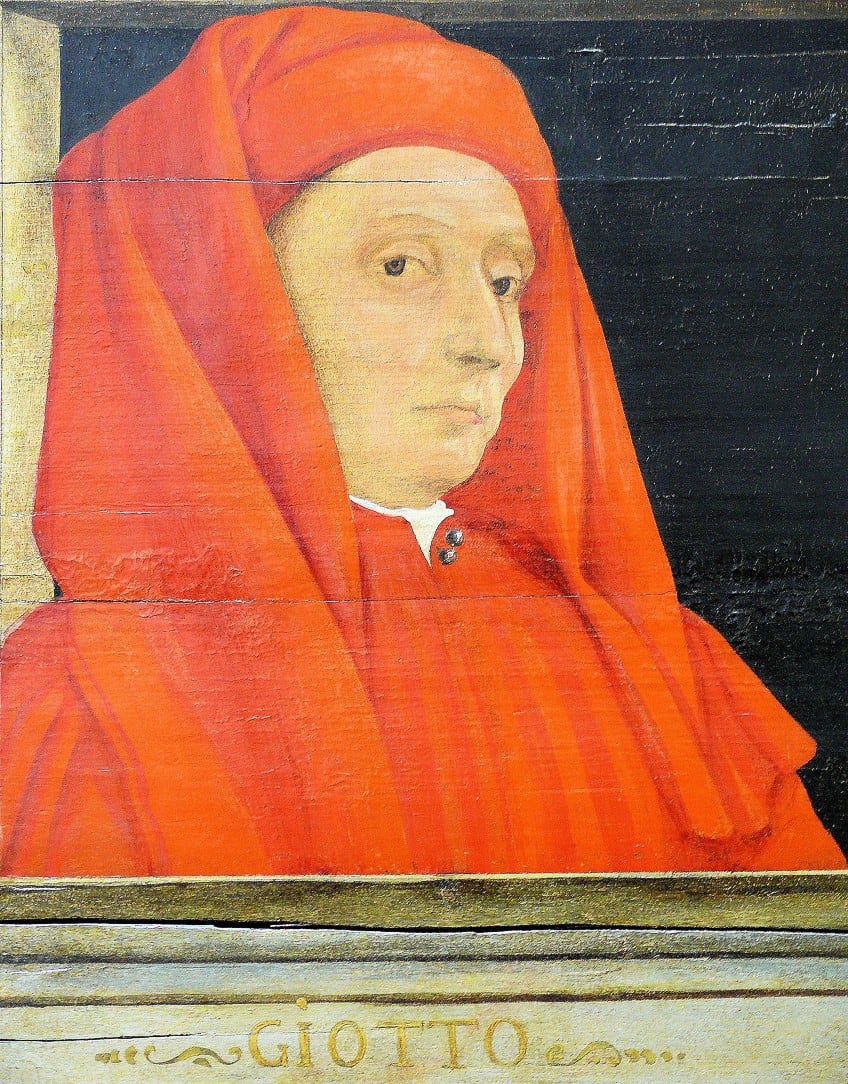
Giotto was also mentioned in The Divine Comedy by Dante Alighieri about the Florentine painter Cimabue, which further sheds light on Giotto’s legacy during the 14th and 15th centuries. Giorgio Vasari, a 16th-century artist, and biographer included Giotto in his published work, Lives of the Most Eminent Italian Painters, Sculptors, and Architects (1550) on Italian art history.
Vasari places Giotto at the forefront of painting alongside Cimabue as a man who “broke away from the Middle Ages” and introduced “good modern manner” to Italian art.
Scrovegni Chapel Frescoes (c.1303 – 1310)
| Date | c. 1303 – 1310 |
| Medium | Fresco |
| Dimensions (m) | Nave: 20.88 x 8.41 x 12.65 (h), Apse area: 4.49 x 4.31 |
| Where It Is Housed | Scrovegni Chapel Arena, Padua, Veneto, Italy |
As mentioned above, the Scrovegni Chapel (Arena) hosts one of Giotto’s best frescoes, commissioned by a banker called Enrico Scrovegni who was the son of a notorious banker (referenced by Dante as someone who belonged to one of the circles of hell). It is believed that Enrico established the church as an effort of atonement for his father’s sin of usury.
Usury referred to the act of charging interest on a loan and was regarded as a sin by the church.
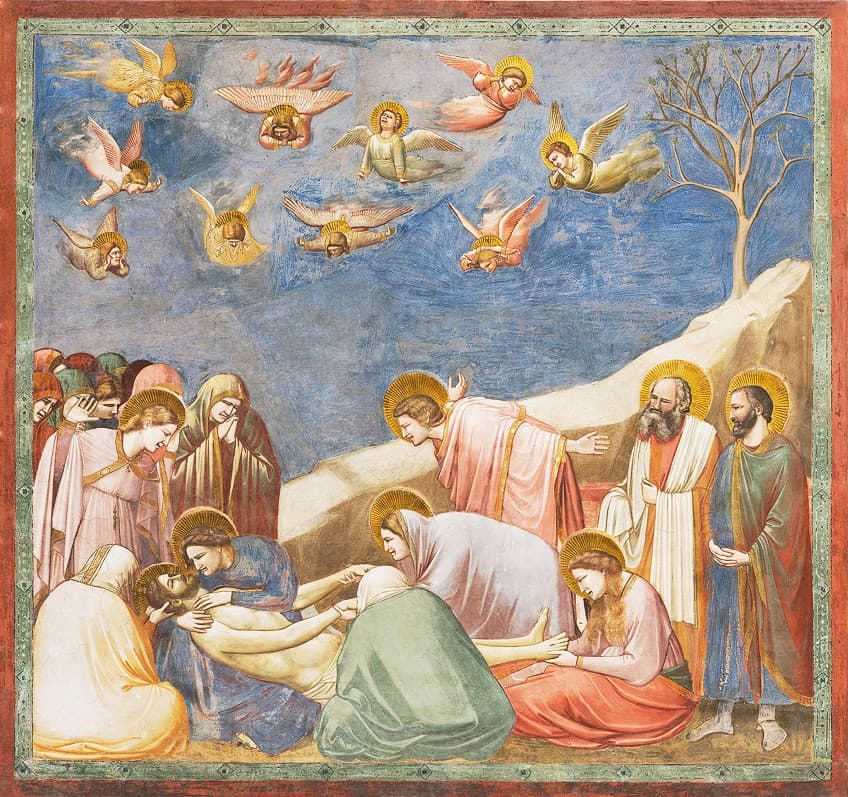
Enrico himself features on the walls of the Arena Chapel in the fresco The Last Judgment, depicted as part of the blessed crowd. In 2021, the Arena was declared a UNESCO World Heritage Site for housing one of Western history’s greatest masterpieces.
Lorenzo Ghiberti (1378 – 1455)
| Artist Name | Lorenzo di Bartolo (Lorenzo Ghiberti) |
| Date of Birth | c. 1378 |
| Date of Death | 01 December 1455 |
| Associated Movements | Early Renaissance |
| Medium | Sculpture |
Lorenzo Ghiberti is credited as being the winner of a grand competition in 1401 for the commissioned designs of new bronze doors for the Baptistry of St John. On the doors were multiple panels depicting biblical scenes from the Old Testament and several artists were chosen to represent a panel with the scene of Isaac’s sacrifice.
This was the challenge yet the competition ended in a tie between Ghiberti and another artist called Filippo Brunelleschi.

Brunelleschi was scorned by his loss after a suggestion was made that he collaborates with Ghiberti on the final design and so he withdrew, allowing Ghiberti to win the commission. The bitter Brunelleschi abandoned sculpture and took to architecture due to his loss while Ghiberti went on to produce one of the most popular sculptures from the early Renaissance.
The Gates of Paradise (1425 – 1452)
| Date | c. 1425 – 1452 |
| Medium | Bronze |
| Dimensions (m) | 213.3 (h) |
| Where It Is Housed | Baptistery of St John, Florence, Italy |
Ghiberti was also a goldsmith in addition to being a sculptor and executed The Gates of Paradise between 1425 and 1452. These 17-foot-tall bronze doors are known to be an iconic artwork of the Renaissance and are a strong reflection of Ghiberti’s mastery of linear perspective. The first two doors in the Baptistry were created by Andrea Pisano around the 14th century and contained 28 quatrefoil panels with 20 panels on the top portraying scenes from the life of John the Baptist.
The eight panels on the bottom portray the eight virtues: hope, charity, faith, fortitude, humility, temperance, prudence, and justice.
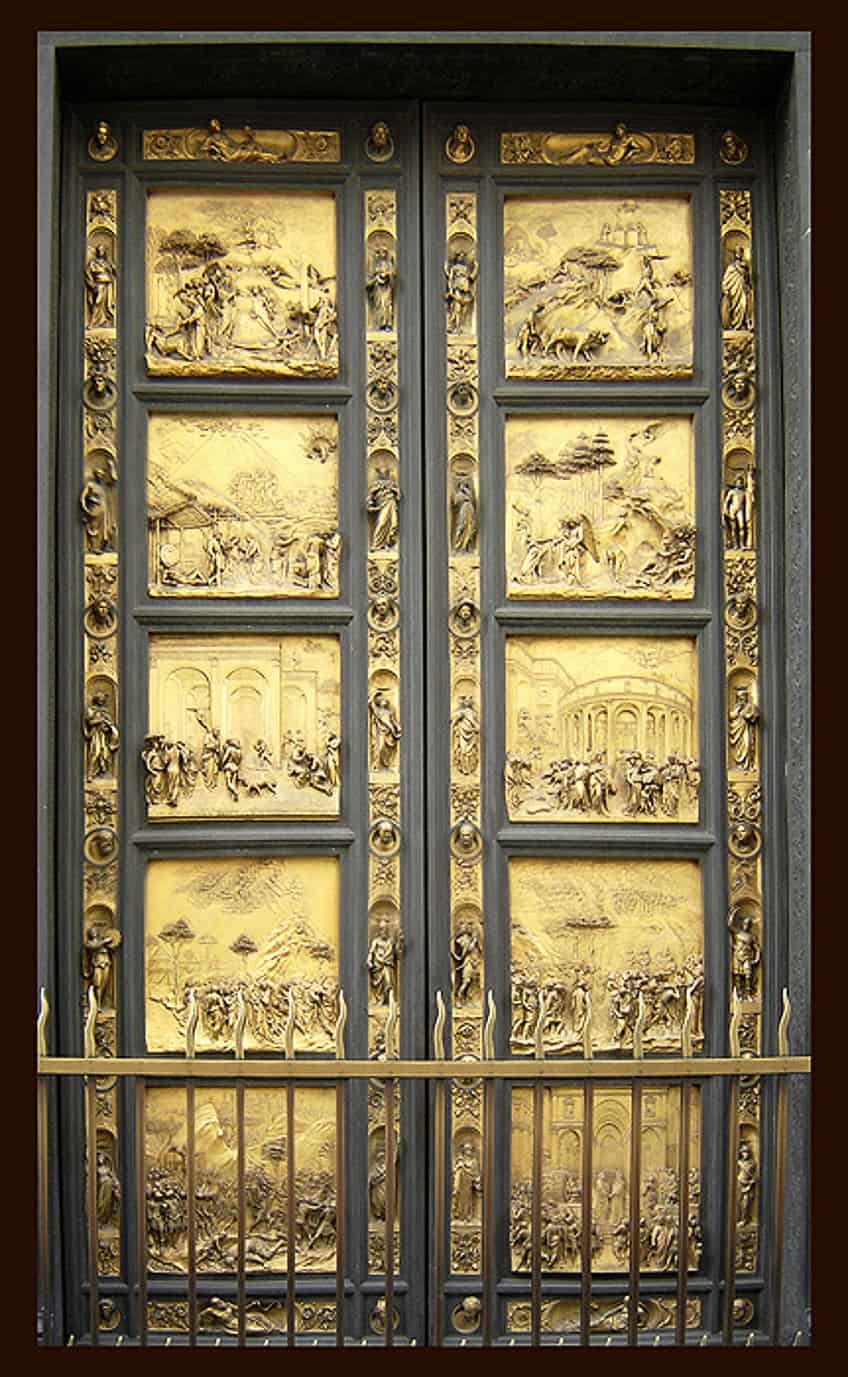
The third door in the north was granted to Ghiberti after he won the competition. These bronze doors depict scenes of Jesus Christ’s life from the New Testament and also contain 28 panels: 20 of Christ’s life and eight depicting the four evangelists. After the completion of the bronze doors, Ghiberti was tasked with designing the East gate but this time Ghiberti had more artistic freedom in depicting the subject matter than the North-facing doors.
Here, Ghiberti lowered the number of panels to 10 and changed the size and shape of the panels.
Donatello (1386 – 1466)
| Artist Name | Donato di Niccolò di Betto Bardi (Donatello) |
| Date of Birth | c. 1386 |
| Date of Death | 13 December 1466 |
| Associated Movements | Early Renaissance |
| Medium | Sculpture |
Donato di Niccolò di Betto Bardi, better known as Donatello, is one of the most iconic 15th-century artists of the early Renaissance who was also part of the competition for the Baptistry doors. Donatello was close associates with Brunelleschi since his teenage years as a student in Ghiberti’s workshop.
The duo was so close that they were described as being inseparable.
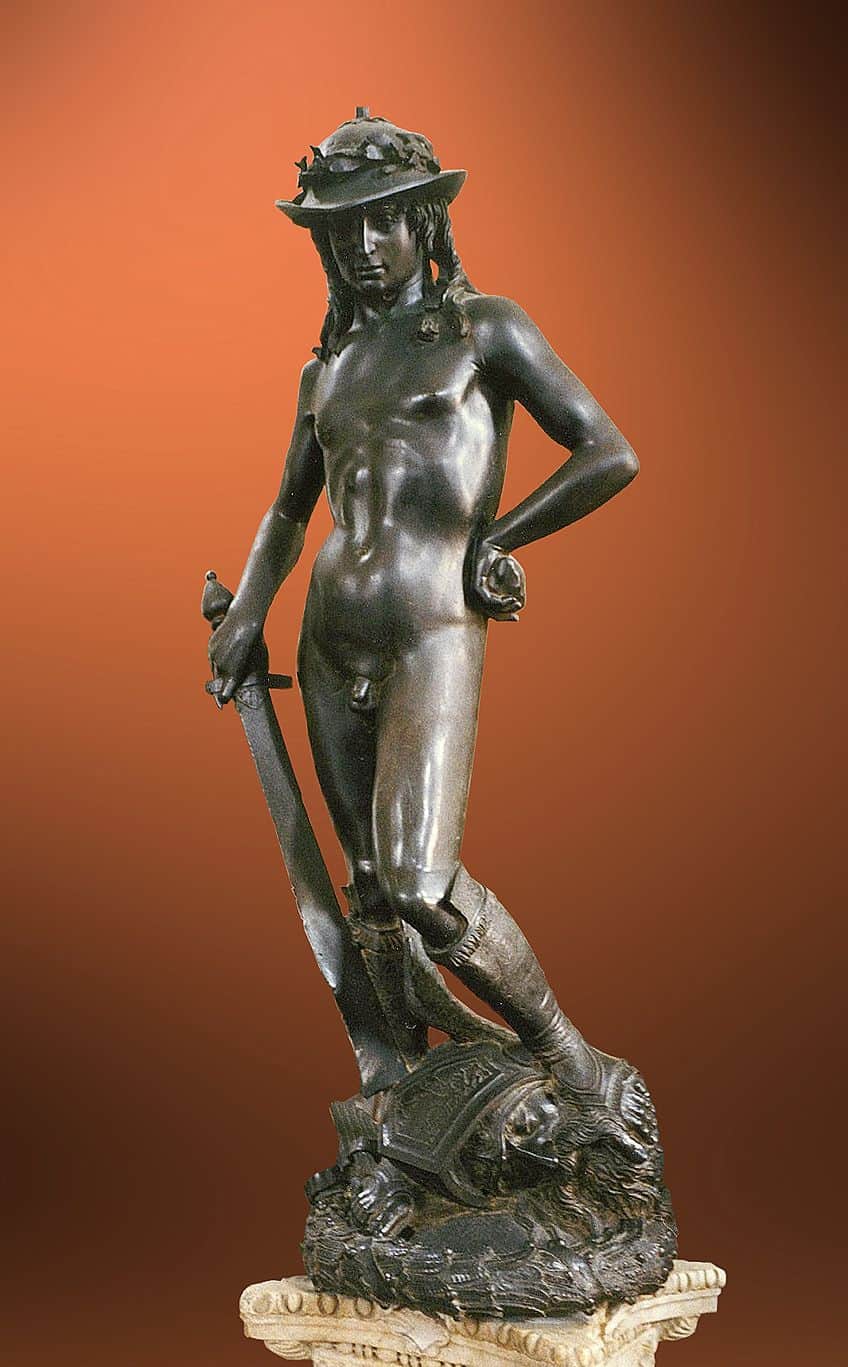
In Florence, Donatello became the first artist to use linear perspective in his sculptures and innovated a new shallow carving technique called relieve schiacciato to give his sculptures an atmospheric effect. This new method can be seen in his work on St George and the Dragon (c. 1416).
Feast of Herod (1423 – 1427)
| Date | c. 1423 – 1427 |
| Medium | Bronze |
| Dimensions (cm) | 60 x 60 |
| Where It Is Housed | Battistero di San Giovanni (Siena) |
This relief was Donatello’s first bronze relief sculpture that demonstrates the marriage of classical form and emotional expression with the perspective approach of orthogonal diagonals and transversal lines to guide the viewer’s eye into the negative spaces and build a sense of tension. Feast of Herod depicts the beheading of St John the Baptist as described in the bible as a request made by Salome to Herod Antipas.
The scene illustrates an executioner presenting the beheaded St John with Herod’s reaction expressing utter shock.

Donatello made use of a continuous narrative to illustrate the scene as opposed to Andrea Pisano’s version of the southern doors of the Florence Baptistry, which were portrayed as separate events. Donatello presents the scene without showing the explicit nature of the beheading of St John.
This was one way that his work stood out from traditional representations of the scene in addition to the emotional expressions of Herod and the rest of the figures in the relief.
Fra Angelico (1395 – 1455)
| Artist Name | Guido di Pietro (Fra Angelico) |
| Date of Birth | c. 1395 |
| Date of Death | 18 February 1455 |
| Associated Movements | Early Renaissance |
| Medium | Painting, fresco |
Born as Guido di Pietro around 1395, Fra Angelico was one of the most notable fresco artists responsible for some of the best pre-Renaissance artworks. Vasari even thought of Fra Angelico as having a rare and “perfect” talent, which is somewhat of a huge claim and complement for any painter.
Among his many nicknames, he was granted Fra Giovanni da Fiesole, meaning Brother John of Fiesole, and the most popular, Fra Giovanni Angelico, meaning Angelic Brother John.

Fra Angelico was granted this title of being a “blessed one” by Pope John Paul II who recognized the holiness of the artist’s life. Fiesole was the name of the town where he took his vow as a Dominican friar. In equal respect, Fra Angelico’s paintings were held in the same regard as his title – angelic and filled with piety. In 1445, Pope Eugene IV requested Fra Angelico to paint the frescoes for the Chapel of the Holy Sacrament, which was later demolished under Pope Paul III.
Between 1447 and 1449, Fra Angelico returned to the Vatican to create frescoes for Nicholas V.
Coronation of the Virgin (1432)
| Date | c. 1432 |
| Medium | Tempera on panel |
| Dimensions (cm) | 112 x 114 |
| Where It Is Housed | Uffizi Gallery, Florence |
Fra Angelico’s altarpieces contained qualities that were both conservative and progressive for its time. The Coronation of the Virgin is one such example executed wholly in the Gothic style as per tradition but stands out for its added three-dimensionality and naturalistic features of the figures and the drapery on their garments. The painting illustrates the Virgin being crowned by Christ against a splendid backdrop of gold, which was a traditional feature of medieval painting.
The rays of light were made using an engraving technique and were meant to symbolize the rays of divine light.

Fra Angelico focused more on the application of gold ground, vermillion, and azure blue, which made for a striking image of holiness. The painting is also an opulent display of the artist’s mastery of gilding as seen in the figures’ halos. Coupled with the three-dimensional layer of depth seen on the figures’ robes, Fra Angelico added weight to a scene that would otherwise be depicted as still, floating, and light among the clouds.
Paolo Uccello (1397 – 1475)
| Artist Name | Paolo di Dono (Paolo Uccello) |
| Date of Birth | 15 June 1397 |
| Date of Death | 10 December 1475 |
| Associated Movements | Early Renaissance |
| Medium | Painting, fresco |
Paolo di Dono, also known as Paolo Uccello, was a major contributor to the visual perspective in art. Uccello was also a mathematician and painter who was “obsessed with perspective” and would pull off multiple all-nighters to study the concept of the vanishing point. Many artists of the time would utilize perspective to narrate different stories but Uccello leveraged it to illustrate depth in painting.
Uccello also championed the genre of painting dedicated to battle scenes and was famous for his 1432 work on the battle between Siena and Florence.
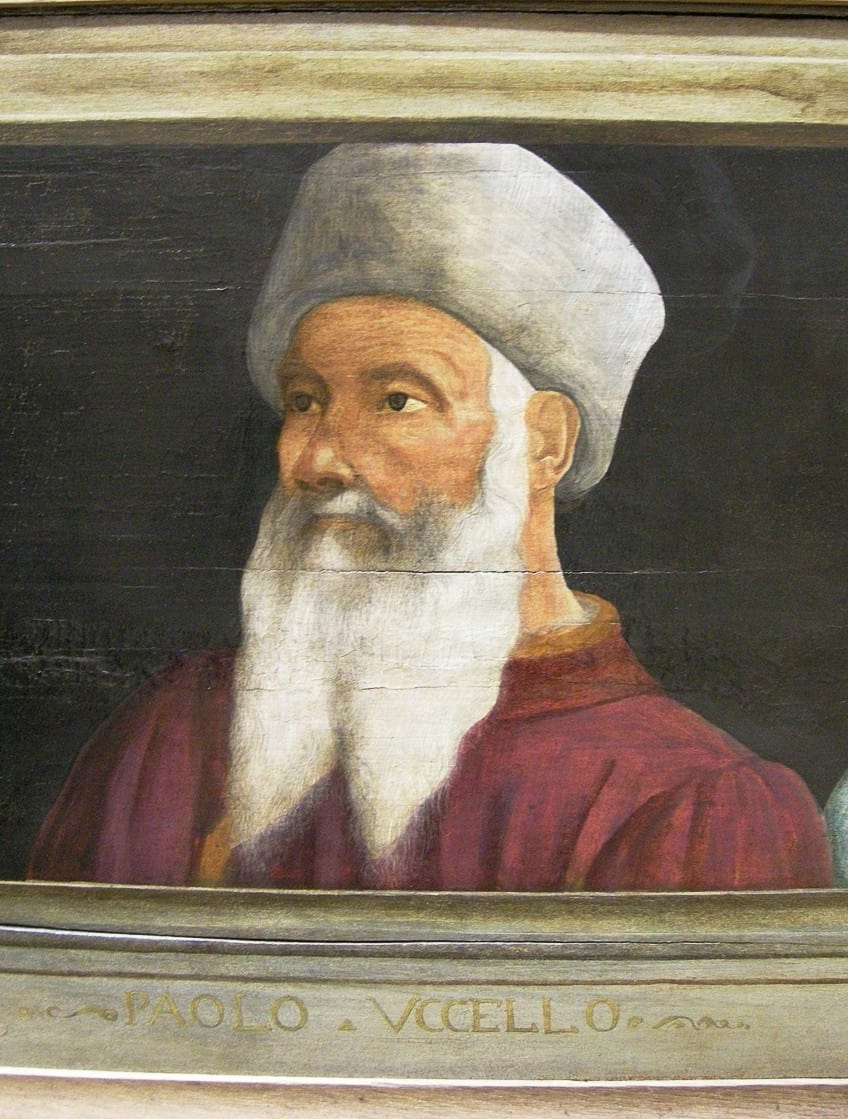
Funerary Monument to Sir John Hawkwood (c. 1436)
| Date | c. 1436 |
| Medium | Fresco mounted on canvas |
| Dimensions (cm) | 820 x 515 |
| Where It Is Housed | Uffizi Gallery, Florence |
Also called the Equestrian Monument to Sir John Hawkwood, this fresco by Uccello is one of his best works of the early Renaissance and served as a commemoration of John Hawkwood for display at the Basilica di Santa Maria del Fiore.
This painting is also referenced as a form of propaganda for appropriating a foreign soldier as a Florentine hero.

It demonstrates an implied promise to other condottieri (Italian captains of mercenary companies and armies during the Italian wars of the Renaissance) that they may also be commemorated as such if they served Florence. Additionally, the painting was also interpreted as a tool for political competition between the Medicis and the Albizzis., especially after its recommission by the Medicis.
Masaccio (1401 – 1428)
| Artist Name | Tommaso di Ser Giovanni di Simone (Masaccio) |
| Date of Birth | 21 December 1401 |
| Date of Death | c. 1428 |
| Associated Movements | Early Renaissance |
| Medium | Painting, fresco |
Masaccio was one of the greatest Italian painters of the early Renaissance who in the words of Vasari, was highly skilled at recreating lifelike figures and imitating nature. He provided an overall sense of complete three-dimensionality, which was uncharacteristic for most Italian painters of the Quattrocento generation. Masaccio was one of the first few artists who employed the nude and foreshortening in his compositions, another artistic trait that was quite rare for the time. Masaccio’s name was known to be a humorous one meaning “clumsy” Tom.
Masaccio had a brief art career but his impact was incredibly profound to those around him.
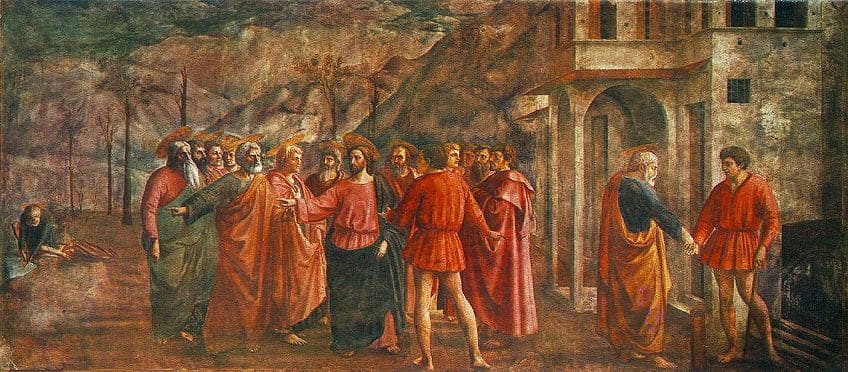
Masaccio was also one of the first artists to employ the use of a vanishing point in painting as well as a linear perspective. His work pushed for greater Realism and naturalistic forms, which were the opposite of the former International Gothic style that employed intricate ornamental elements in art.
Unfortunately, Masaccio passed at the ripe age of 26 with no known cause of death, and his passing was considered a great loss to the Italian art community.
The Expulsion from the Garden of Eden (c. 1425)
| Date | c. 1425 |
| Medium | Fresco |
| Dimensions (cm) | Dimensions unavailable |
| Where It Is Housed | Santa Maria del Carmine, Florence, Italy |
This painting is a portion of a series of frescoes painted for the Brancacci Chapel situated in the Santa Maria del Carmine church in Florence. Completed around 1425, this scene depicts the biblical narrative of the expulsion of Adam and Eve from the Garden of Eden as described in the book of Genesis chapter three.
Masaccio’s depiction of Adam is said to reference many sculptures of the Greek figure Marsyas from traditional Greek mythology and the image of the crucifix by Donatello.
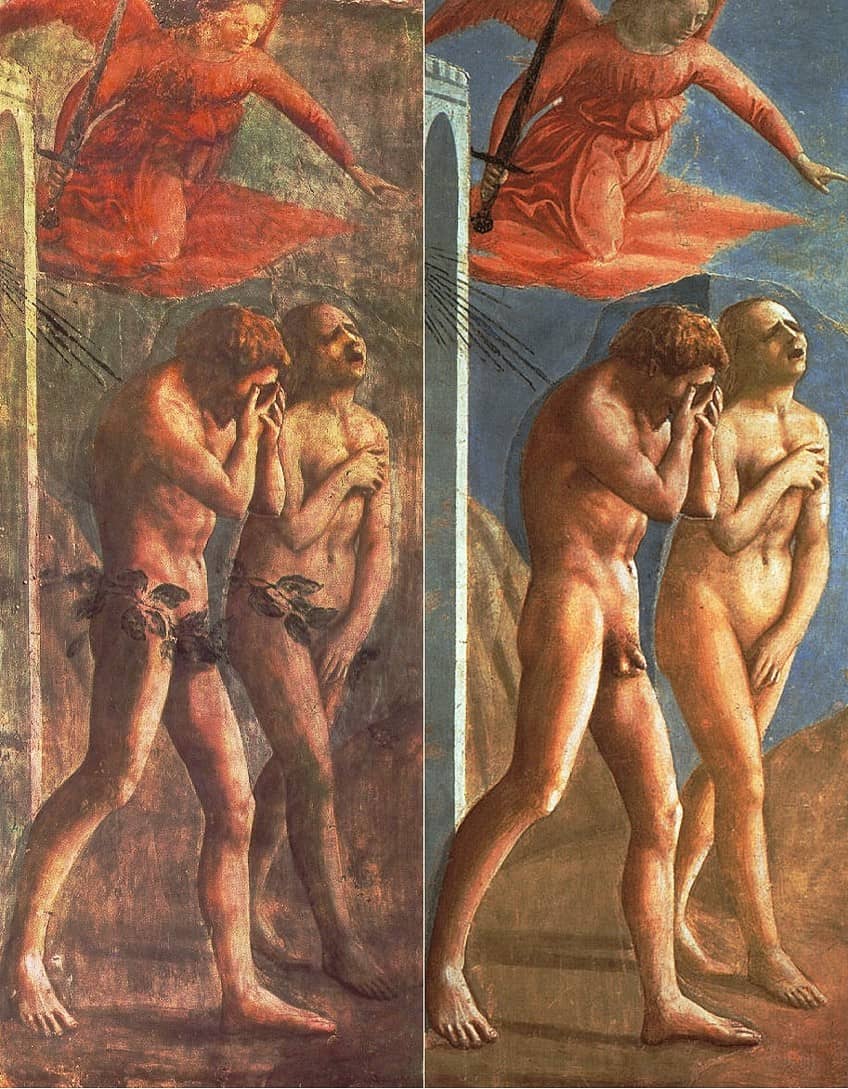
Eve on the other hand is said to have been inspired by Venus Pudica, also known as the Aphrodite of Knidos. Approximately three centuries after the fresco’s completion, the notorious Cosimo III de’ Medici implemented new changes to the fresco and ordered that the naked bodies of the holy figures be covered with fig leaves.
This was done in line with the current societal ideas of decorum and was later removed around the 1980s during the fresco’s restoration.
Sandro Botticelli (c. 1445 – 1510)
| Artist Name | Alessandro di Mariano di Vanni Filipepi (Sandro Botticelli) |
| Date of Birth | c. 1445 |
| Date of Death | 17 May 1510 |
| Associated Movements | Early Renaissance, Italian Renaissance |
| Medium | Painting, fresco |
Sandro Botticelli is one of the most iconic Italian Renaissance artists who is most famous for his mythological subject matter and numerous religious paintings portraying the Madonna and child. Botticelli was considered an independent master well into the second half of the 1400s.
He eventually developed his style, which was informed by Gothic and early Renaissance styles.
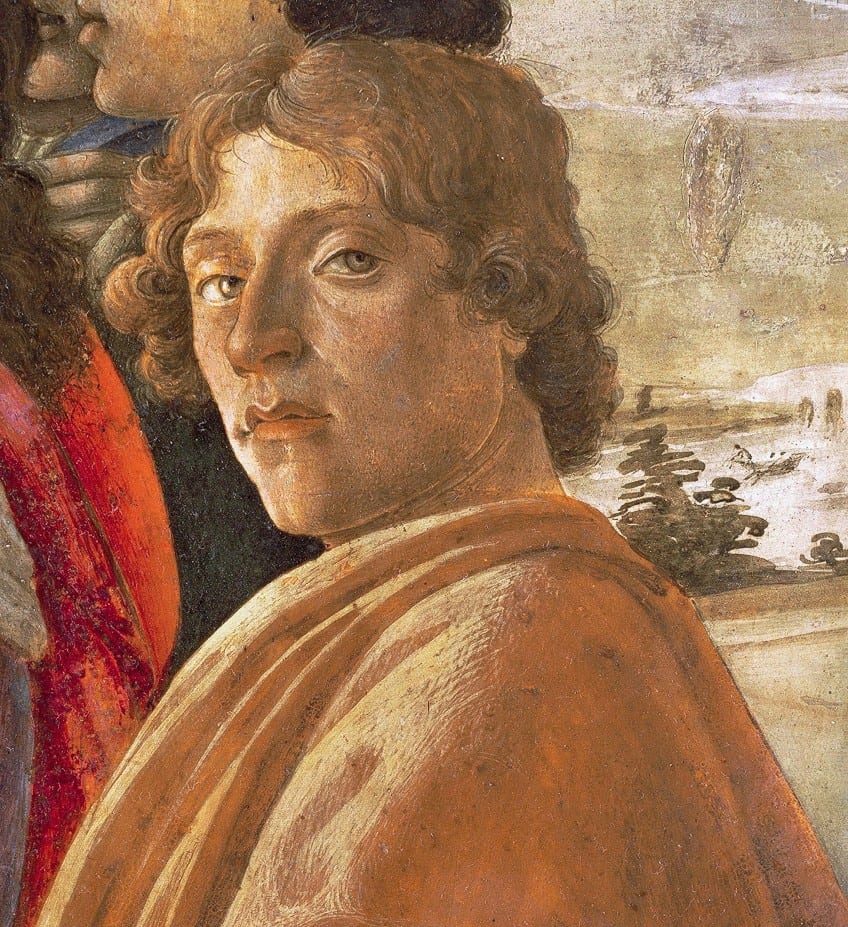
Many historians associated Botticelli with the Florentine School, which was under the patronage of the Medicis (Lorenzo de Medici) and helped propel the golden age of the Renaissance. The Medicis ruled Florence until 1494, after which they were expelled.
Lorenzo il Magnifico was a patron of the visual arts and supported Botticelli throughout his career.
The Birth of Venus (1484 – 1486)
| Date | c. 1484 – 1486 |
| Medium | Tempera on canvas |
| Dimensions (cm) | 172.5 x 278.9 |
| Where It Is Housed | Uffizi, Florence, Italy |
Created between 1484 and 1486, The Birth of Venus is one of the most famous Botticelli paintings and the most analyzed in art history. The painting portrays the goddess Venus emerging from the shore in a giant scallop shell shortly after her birth. The painting was said to be painted as a wedding gift for one of the Medicis and is one of the first paintings to emerge that portrayed a scene from Greek antiquity.
While naturalism was a major element in all great early Renaissance paintings, Botticelli neglected it here and seldom used deep perspectival space or three-dimensionality in his paintings.
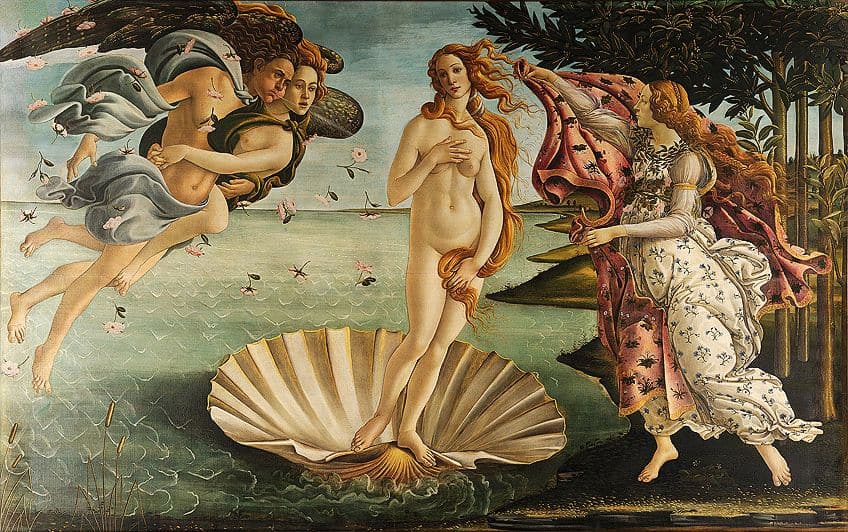
If anything, this is one such painting that lacks the correct proportion and perspective. Other important early Italian renaissance artworks include Procession of the Magi (1459 – 1461) by Benozzo Gozzoli, St George and the Dragon (1470) by Paulo Uccello, St Jerome in his Study (1474 – 1475), and Lamentation over the Dead Christ (1480) by Andrea Mantegna.
Influential Figures of Early Renaissance Art
The early Renaissance was a time of gradual change in light of the different emerging approaches to painting, sculpture, and perspective. Humanism was the underlying concept behind the Renaissance and the trigger from which many later styles and thought patterns around art evolved. Below, we will take a look at some of the most influential figures of the early Renaissance and their contribution to art and the broader canon of the early Renaissance.
Francesco Petrarca (1304 – 1374)
| Name | Francesco Petrarca |
| Date of Birth | 20 July 1304 |
| Date of Death | 19 July 1374 |
| Nationality | Italian |
| Associated Movements, Contributions, and Mediums | Discovered letters of Cicero, Humanism, Initiator of the Renaissance |
Francesco Petrarca was a popular 14th-century poet who is also credited with the title of being a founder of Humanism, one of the main driving forces of the Renaissance. Petrarca was the one who discovered the classical texts of authors such as Roman Cicero and this played a huge role in his works to follow.
At the time, Petrarca was considered to be revolutionary since he wrote most of his poems in Italian as opposed to the medieval preference for Latin, which he also coined the “dark ages”.

Petrarca’s influence reached the 16th century and his works became foundational to the structure of the modern Italian language as created by Pietro Bembo. The poet was later endorsed by the Accademia della Crusca as a model figure of study in the Italian style and lyrical poetry and held great influence over other poets like Dante Alighieri, who went on to inspire many artists of the Renaissance.
Filippo Brunelleschi (1377 – 1446)
| Name | Filippo di ser Brunellesco di Lippo Lapi |
| Date of Birth | 1377 |
| Date of Death | 15 April 1446 |
| Nationality | Italian |
| Associated Movements, Contributions, and Mediums | Sculpture, architecture, mechanical engineering, linear perspective, design |
Filippo Brunelleschi also participated in the competition for the bronze doors alongside Ghiberti but despite his loss and exit from the world of sculpture, he was also interested in architecture. Brunelleschi is an important figure in the establishment of influential designs and innovations in architecture, which were later studied by architects.
His innovations included the design of a centrally-planned church, which was quickly adopted across the Renaissance.
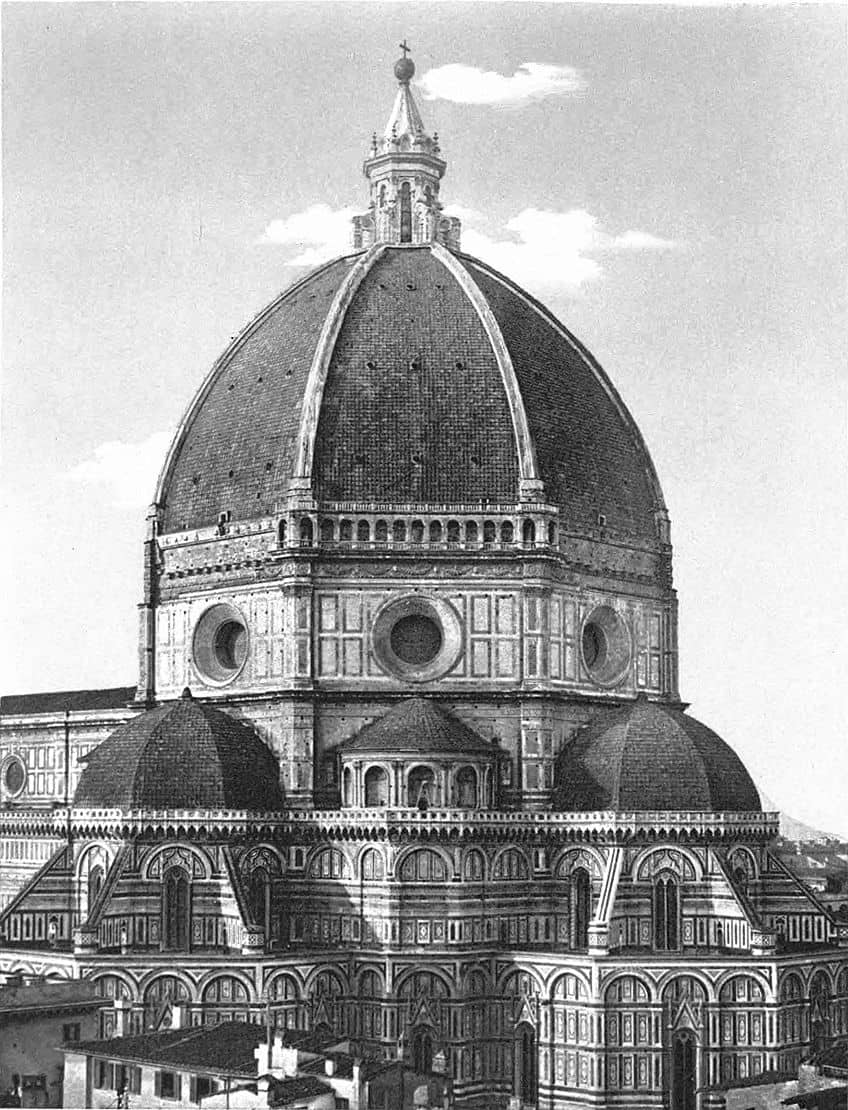
Through his defeat in the Baptistry competition, Brunelleschi was able to indulge his exploration of linear perspective. Following the defeat, Brunelleschi exiled himself to Rome alongside his close friend Donatello and for several years, the duo would travel around measuring buildings and documenting their studies of the classical design principles. They were so dedicated that the local people even mistook them for treasure hunters.
Although Leon Battista Alberti is credited with publishing definitive works on perspective, Alberti did acknowledge Brunelleschi in On Painting (1435).
Leon Battista Alberti (1404 – 1472)
| Name | Leon Battista Alberti |
| Date of Birth | 14 February 1404 |
| Date of Death | 25 April 1472 |
| Nationality | Italian |
| Associated Movements, Contributions, and Mediums | Renaissance Humanist author, art, poetry, philosophy, linguistics, architecture, cryptography, mathematics |
Although not an artist, Leon Battista Alberti was one of the most influential figures in 15th-century art. He was considered an intellectual theorist who published many books on painting, sculpture, and architecture that provided crucial information on the development of each discipline at the time.
One of his publications De Statua (1435) was the first book to mention the term “additive sculpture”, which was defined as the addition of material to create an artwork.
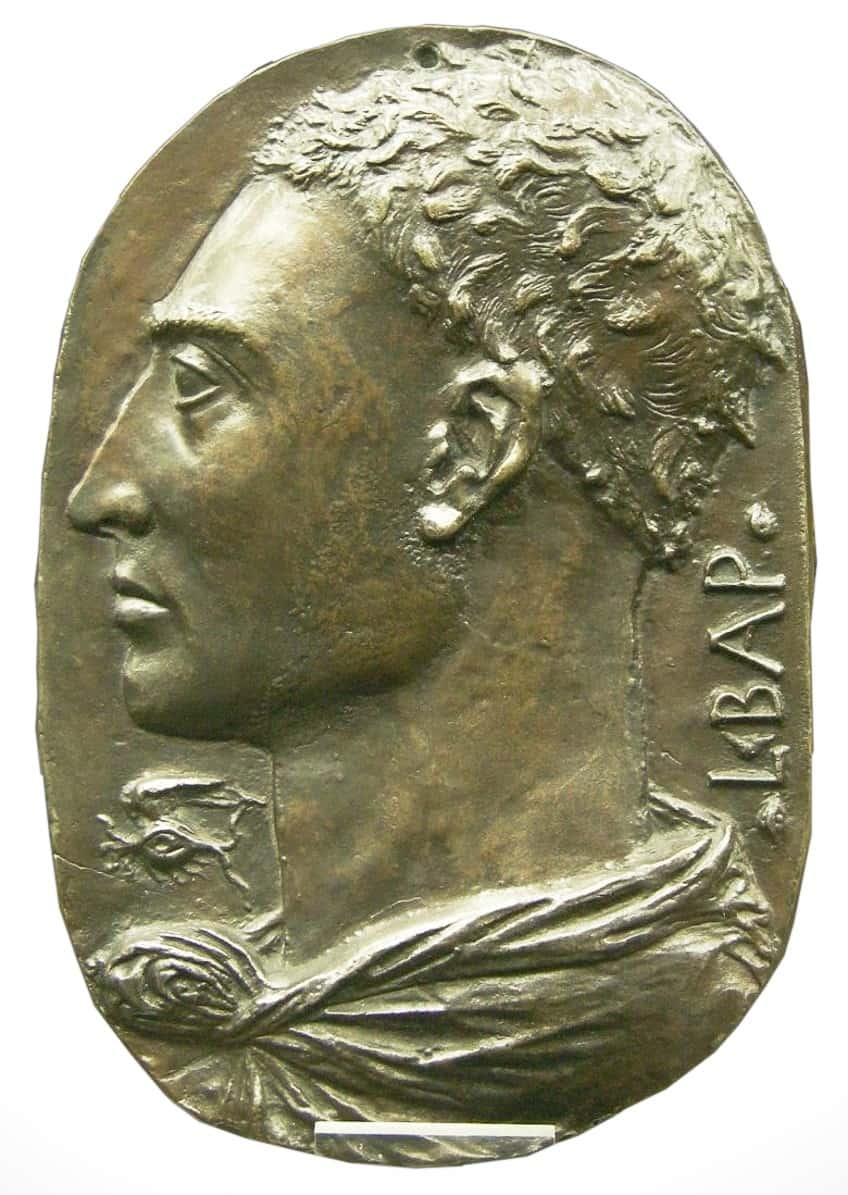
It also covered subtractive sculpture, which made clear the act of carving away material to reveal a work instead of a construct and also carried serious naturalistic undertones on the approach to classical work. Albertis’s description of painting also put pen to paper the technical understanding of painting as a “projection of lines and colors on a surface”.
Alberti was thus an incredibly important figure in the documentation and early historicization of the styles and techniques of early Renaissance artists such as Ghiberti, Donatello, and Masaccio.
Characteristics of Renaissance Art: A Summary
After reviewing some of the most influential figures, artists, and artworks of the early Renaissance, it is important to calibrate your understanding of the defining characteristics of Renaissance art. These include the primary influence of Humanism and a focus on the individual. Additionally, there was a gradual increase in the presence of Realism, Naturalism, and added three-dimensionality to the human form, as seen in many religious paintings of the early renaissance period.
Other characteristics of early Renaissance art include the use (and mastery) of techniques such as one-point perspective, the chiaroscuro painting method, and foreshortening.
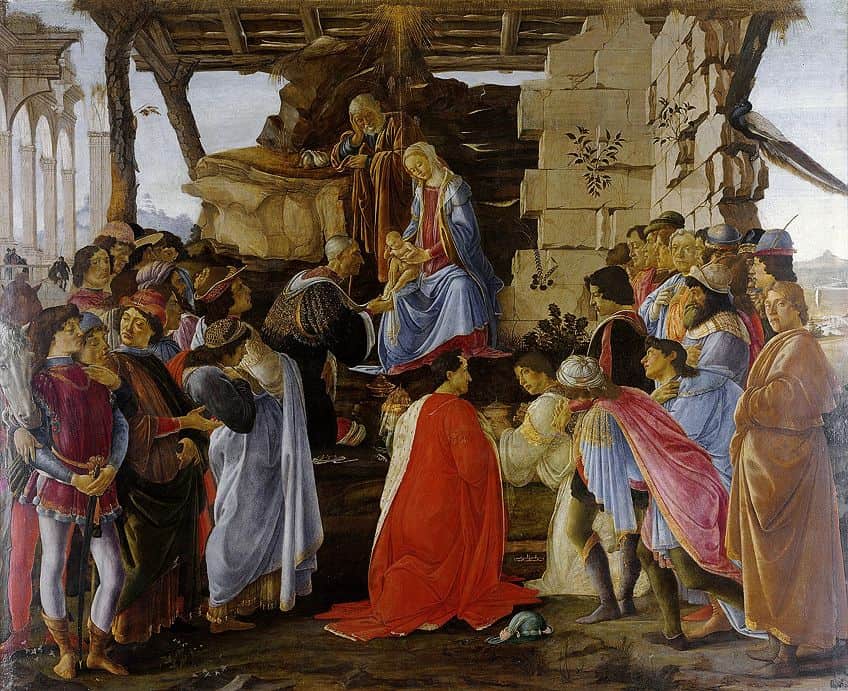
The beginning of the Renaissance was a period of realization, enlightenment, and rediscovery that played a significant role in the development of art as seen in the pre-Renaissance artwork above. The characteristics of early Renaissance art were greatly informed by the innovative approaches in thinking around art making, painting techniques, perspective, proportion, and its significance to the classical subject matter and contemporary styles.
Take a look at our early Renaissance art webstory here!
Frequently Asked Questions
When Did the Early Renaissance Time Period Occur?
The early Renaissance time period occurred after the Middle Ages around the early 1400s and is also referred to as the Quattrocento period.
Why Was the Early Renaissance an Important Period?
The early Renaissance was an important period in art history because it marked the development and adoption of different approaches to art-making, including the use and definition of the vanishing point in perspective, the chiaroscuro technique, foreshortening, and a preference for individualism in art as opposed to a mere representation of detached classical subject matter. It was a time of rediscovery that significantly impacted the way people viewed and understood the antiquity era and the need to position the human as an individual rather than its collective association with religion or mythology.
How Did the Early Renaissance Begin?
The early Renaissance began with the rediscovery of ancient texts from the antiquity era of Greek and Rome as well as the birth of Humanism and other external factors such as technological and cultural innovations in Europe.
Jordan Anthony is a Cape Town-based film photographer, curator, and arts writer. She holds a Bachelor of Art in Fine Arts from the University of the Witwatersrand, Johannesburg, where she explored themes like healing, identity, dreams, and intuitive creation in her Contemporary art practice. Jordan has collaborated with various local art institutions, including the KZNSA Gallery in Durban, the Turbine Art Fair, and the Wits Art Museum. Her photography focuses on abstract color manipulations, portraiture, candid shots, and urban landscapes. She’s intrigued by philosophy, memory, and esotericism, drawing inspiration from Surrealism, Fluxus, and ancient civilizations, as well as childhood influences and found objects. Jordan is working for artfilemagazine since 2022 and writes blog posts about art history and photography.
Learn more about Jordan Anthony and about us.
Cite this Article
Jordan, Anthony, “Early Renaissance – Discover the Early Renaissance Time Period.” artfilemagazine – Your Online Art Source. November 16, 2022. URL: https://artfilemagazine.com/early-renaissance/
Anthony, J. (2022, 16 November). Early Renaissance – Discover the Early Renaissance Time Period. artfilemagazine – Your Online Art Source. https://artfilemagazine.com/early-renaissance/
Anthony, Jordan. “Early Renaissance – Discover the Early Renaissance Time Period.” artfilemagazine – Your Online Art Source, November 16, 2022. https://artfilemagazine.com/early-renaissance/.


